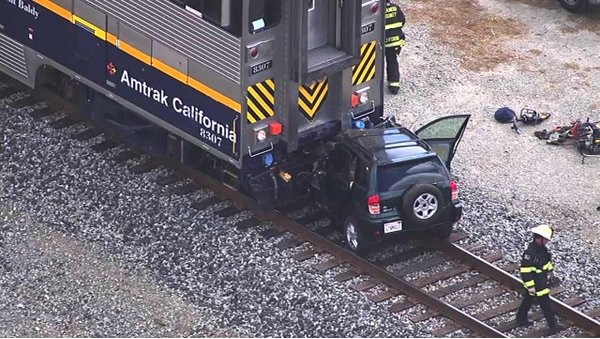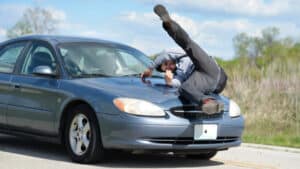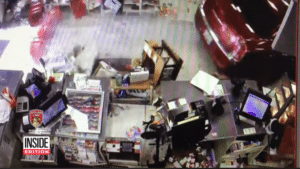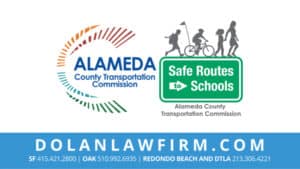
I wish to pause from answering reader questions this week to highlight that the California Legislature has proclaimed September as both “Rail Safety Month” and “Pedestrian Safety Month.”
Let’s start with the topic of rail safety. Unfortunately, California leads the nation in annual rail fatalities. Part of the reason why there are so many fatalities is the known fact that it is extremely difficult to judge the speed of an approaching train. A Caltrain commuter train can reach a top speed of 79 miles per hour. A locomotive with five passenger cars can take a quarter-mile or more for the train to make a full stop. The average freight train takes a mile or more to stop.
Statistics show that many of those who have died along the tracks were trespassing on railroad property. Last year, in California 145 people were truck by trains while trespassing along the railroad right of way. Two-thirds of these incidents resulted in fatalities. Many of these people were taking “shortcuts” across the tracks. Some were unaware of the approaching train because they were listening to music on their portable electronic devices.
According to the Federal Railroad Administration, 55 Californians have died already this year after being hit by a train traveling on an interstate rail line. So far this year on the 77 miles of Caltrain tracks stretching from Gilroy to San Francisco, 8 people have died. Eighteen people last year were struck and killed by a Caltrain.
Approximately 20% of fatalities along California rails occur during collisions at crossing grades where the paths of autos, pedestrians and trans cross at street level. These incidents include pedestrians walking around lowered crossing gates and car drivers trying to “out run” an approaching train.
At the same time, given the amount of traffic and congestion on Bay Area roads bisected by actively used rail roads, even conscientious car drivers can make a mistake and find themselves stopped on rail tracks when traffic suddenly stops. No one should die due to a common mistake. Every rail crossing in the Bay Area should have automatic-warning systems with flashing lights and gates. Furthermore, railroads and localities need to proactively identify intersections and crossings with heightened risks and spend the necessary funds to enhance their safety.
For example, in May, 30-year-old Vannessa Henriquez and her 3-year-old daughter Saidy were killed by an Amtrak train in San Leandro. The SUV Henriquez was driving came to a stop in congested traffic before the crossing guards gates were lowered and the train approached. She likely did not realize the danger she was until it was too late. The train tracks diagonally bisected the road she was driving and the crossing guards were a considerable distance from the rail tracks.
September is also “Pedestrian Safety Month” in California. The Legislature sought to draw attention to the fact that 813 pedestrians were killed on California roadways in 2015, accounting for nearly 25 percent of all roadways deaths in the state, up from 17 percent just ten years earlier. In 2015, 24 pedestrians were killed in San Francisco alone by motor vehicles.
Both car drivers and pedestrians are increasingly distracted. Hundreds of thousands of serious injury crashes occur across America annually because drivers were distracted by phone calls, emails, texts, and increasingly social media and other applications on their mobile phones. Pedestrians also need to pay attention to where they are walking and not be focused on their smartphones.
Keep in mind, the average SUV has at least two blind spots, can weigh up to six thousand pounds and can take up to six seconds to stop. Most crashes happen with less than 2 seconds of reaction time.
We all share the roads and have a responsibility to use them safely for ourselves and others. We also need to be mindful of the risks posed by trains speeding through our communities and never trespass or stop on the tracks. In turn, rail authorities and localities must step up their efforts to ensure the safety of rail crossings across the Bay Area. Trust me, as a lawyer who represents people who have been grievously injured or had loved ones killed taking a few minutes to be safe is far less inconvenient than a lifetime of pain and loss.
By attorney Christopher B. Dolan, owner of the Dolan Law Firm. Email Chris questions and topics for future articles to help@dolanlawfirm.com










